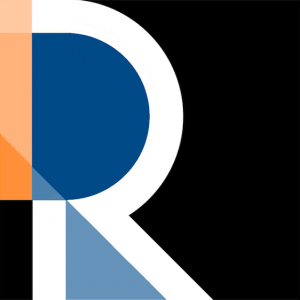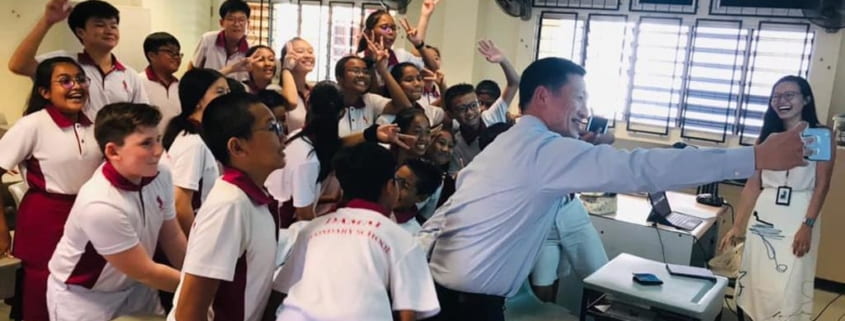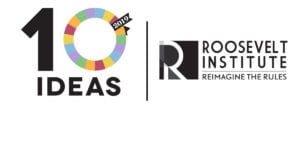2019 10 Ideas Submission – DreamFund: Enabling Life-long Dreams for All
Memo proposal submitted to the Roosevelt 10 Ideas Journal. Written by the Economic Development & Inclusion Policy Centre, Roosevelt Institute @ Yale-NUS College.
DreamFund: Reversing class stratification in Singapore through new low-income child opportunities fund
To halt class stratification grounded in diverging pre-tertiary child development opportunities by family resources, Singapore’s Ministry of Social & Family Development should implement a new child development fund to offer targeted support for children of low-income families.
- Because higher social strata individuals have greater ability to purchase private educational resources, only one-tenth of low-income students make it to the top quarter of academic performers in Singapore. This aggravates social immobility across generations.
- DreamFund will equalize educational opportunities outside school for children of all social backgrounds and thus provides a strong skilled workforce for Singapore at the brink of the Fourth Industrial Revolution. The policy is one that can be realized given both the success of current online-based credit schemes and the affordability in terms of government expenditure.
- The issue of class stratification grounded in income and educational inequality is a major issue generating much discourse and discontent in Singapore today – the Minister of Education has admitted that it is difficult for some low-income families to uplift themselves. With multiple political commentators engaging in this issue, it is prime-time for the introduction of student representation in national public policy-making.
Background & Analysis
A recent OECD report stated that educational “equity has improved markedly overtime” in Singapore, yet there remains gaps in areas such as how well students from lower socioeconomic status (SES) backgrounds perform academically compared to more privileged students. In 2018, only 1 in 10 low-income students from the bottom quarter made it into the top quarter of academic performers in Singapore, scoring worse than 24 other developed economies. This could be explained by the fact that those in the higher socio-economic strata have greater ability to purchase private enrichment. Therefore, this leverage over low-income households aggravates social immobility across generations. Education thus ceases to be a social leveler and instead enables elites to monopolize educational resources and socio-economic capital.[1]
The existing Workfare low-income supplement scheme fails to provide for all low-income individuals. Firstly, it only covers workers aged 35 and above, leaving young parents without aid for their children’s development. While the scheme offers income support up to S$3600 a year, it does not consider dependents – a worker supporting a family of four receives the same amount of subsidy as a worker without dependents. Additionally, the scheme does not cover informally employed and unemployed individuals. Furthermore, government educational funding schemes like Edusave are only applicable to in-school activities, excluding private enrichment. The flaws of existing schemes, therefore, widen the social divide for pre-tertiary educational opportunities in Singapore.
Key Facts
- Two-thirds or 67% of Singaporeans currently have or have previously enrolled their children in private supplementary academic enrichment, whereas only 20% of those in the lowest two income brackets (a monthly income of less than $4,000) have a child in tuition. http://www.blackbox.com.sg/wp/wp-content/uploads/2012/09/Blackbox-You-Know-Anot-Whitepaper-Private-Tuition.pdf
- Income inequality remained persistent in Singapore from 2016 to 2017, even after accounting for government redistributive measures, with Singapore’s gini-coefficient of maintaining at 0.401 in 2016 and 2017, or even increasing from 0.350 to 0.356 using the square root scale.
https://www.singstat.gov.sg/-/media/files/publications/households/pp-s24.pdf - The Minister of Education has acknowledged a perceptible reduction in social mixing by class in recent years. Someone who went to a non-elite school has ties to an average of 3.9 people who went to non-elite schools and 0.4 people who went to elite schools.
https://www.straitstimes.com/singapore/new-study-finds-class-divide-in-singapore - Assuming a monthly pay-out of 75 USD to children aged 7-18 from the bottom quartile of family income, DreamFund will cost 100 million USD annually. This is a mere fraction of another similar cash hand-out scheme, SG Bonus, which offers all adults 150-250 USD annually, and costs 500 million USD. DreamFund is thus a very much affordable programme with maximal benefits.
The Policy Idea
We propose an additional credit scheme targeted at low-income students of pre-tertiary schooling age to subsidize tuition, extra-curricular enrichment programs, and learning support resources (e.g. home learning environment, laptops, books). The policy will apply to students in the bottom quartile of the national income range[1], providing better access to educational resources needed to compete with more well-off peers. Credits allocated will be costed based on the average price of extra-curricular enrichment programs and learning support resources once every two years. This scheme will be implemented by the Ministry of Social & Family Development in conjunction with the Ministry of Education, with schools taking responsibility for identifying eligible students and providing relevant support to both students and parents in accessing this scheme.
(The segment of the population who are covered under the Workfare Income Supplement in addition to unemployed and informally employed workers, thus qualifying as “low-income”.)
Policy Analysis
Direct income support to poor families for educational investment positively impacts academic performance and adult employment rates.[2] Extra-curricular participation also encourages the development of soft skills, aiding social mobility and improving future earnings.[3] Our policy allows lower-income students to better compete with wealthier students and gives them better access to educational resources. Children of unemployed and informally employed workers will also enjoy support as this policy is not tied to parental employment. This is relevant in a future economy facing structural unemployment and new social risks from a gig economy.[6] Our policy is thus a social investment in Singapore’s human capital pool. It ensures a ready supply for skilled labour for an Industry 4.0 economy, where demand for skilled labour rises with the automation of unskilled work.[4][5]. Reducing inequality thus prevents socio-economic problems arising from structural unemployment.
Online-based credit schemes have already been successfully implemented through SkillsFuture, which subsidizes lifelong learning programs, and ActiveSG, which subsidizes fitness programmes. The government thus has sufficient technical expertise to design and maintain an online interface for our policy. While an online system could risk digitally excluding less well-off families, schools can arrange for computers and tech support to be provided to students and families to make claims. Credit schemes also prevent welfare fraud by only releasing funds to reimburse legitimate expenditure. Additionally, the targeted nature of the policy makes it an affordable endeavour relative to expenditure on similar policies such as the SG Bonus scheme, allowing this scheme to be financially sustainable.
References
[1] Christopher Gee, “The Educational ‘Arms Race’: All for One, Loss for All,” IPS Working Paper (Singapore: Institute for Policy Studies, September 2012), 27–28.
https://www.todayonline.com/singapore/singapore-ranks-third-educational-mobility-gaps-remain-report
https://www.straitstimes.com/singapore/education/nearly-half-of-low-income-students-in-singapore-attend-the-same-schools
https://www.channelnewsasia.com/news/singapore/workfare-income-supplement-low-wage-workers-review-10504930
https://www.workfare.gov.sg/Pages/WIS-Eligibility-Criteria.aspx
[2] Greg J. Duncan, Katherine Magnuson, and Elizabeth Votruba-Drzal, “Boosting Family Income to Promote Child Development,” The Future of Children 24, no. 1 (2014): 99, https://doi.org/10.1353/foc.2014.0008; Arloc Sherman, Brandon DeBot, and Chye-Ching Huang, “Boosting Low-Income Children’s Opportunities to Succeed Through Direct Income Support,” Academic Pediatrics, Child Poverty in the United States, 16, no. 3, Supplement (April 1, 2016): S95, https://doi.org/10.1016/j.acap.2016.01.008.
[3] Kaisa Snellman et al., “The Engagement Gap: Social Mobility and Extracurricular Participation among American Youth,” The ANNALS of the American Academy of Political and Social Science 657, no. 1 (January 1, 2015): 194, 204, https://doi.org/10.1177/0002716214548398.
[4] Nathalie Morel, Bruno Palier, and Joakim Palme, Towards a Social Investment Welfare State? : Ideas, Policies and Challenges, ed. Nathalie Morel, Bruno Palier, and Joakim Palme (Policy Press, 2012), chap. 1, https://hal.archives-ouvertes.fr/hal-01393470; Linda Lim, “How Inequality and Low Wages Can Stall Growth,” The Straits Times, July 21, 2018, sec. Opinion, https://www-straitstimes-com.libproxy.yale-nus.edu.sg/opinion/how-inequality-and-low-wages-can-stall-growth.
[5] Nancy W. Gleason, “Singapore’s Higher Education Systems in the Era of the Fourth Industrial Revolution: Preparing Lifelong Learners,” in Higher Education in the Era of the Fourth Industrial Revolution, ed. Nancy W. Gleason (Singapore: Springer Singapore, 2018), 145–46, https://doi.org/10.1007/978-981-13-0194-0_7.
[6] Yan Min Chia, “Tech Disruption May Push up Unemployment Rate,” The Straits Times, October 28, 2016, https://www.straitstimes.com/singapore/manpower/tech-disruption-may-push-up-unemployment-rate; Peter Taylor-Gooby, “New Risks and Social Change,” September 1, 2004, 2–8,
Image Credit: Ong Ye Kung

 Ong Ye Kung
Ong Ye Kung
 https://www.straitstimes.com/singapore/environment/in-pictures-10-most-common-birds-in-singapore
https://www.straitstimes.com/singapore/environment/in-pictures-10-most-common-birds-in-singapore
Leave a Reply
Want to join the discussion?Feel free to contribute!